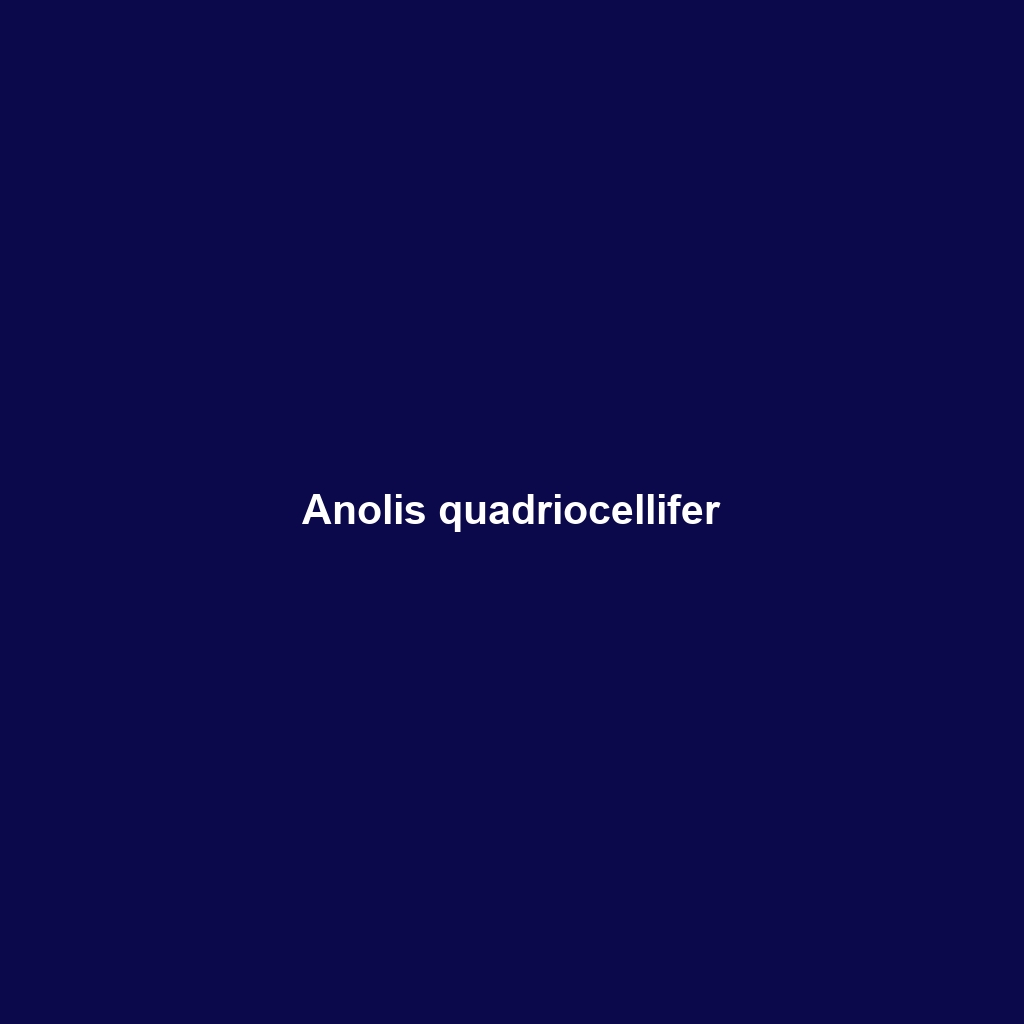Anolis quaggulus: A Comprehensive Species Description
Common Name: Anolis quaggulus
Scientific Name: Anolis quaggulus
Habitat
Anolis quaggulus is primarily found in the tropical rainforests of Central America, specifically in regions of Costa Rica and Panama. This species thrives in humid environments, typically inhabiting areas with dense vegetation, such as lowland forests and edge habitats. They are often seen on trees and shrubs, making them well-adapted to their arboreal lifestyle.
Physical Characteristics
Anolis quaggulus is a medium-sized lizard, generally measuring between 10 to 15 cm in length. They exhibit a range of colors from vibrant green to earthy brown, providing excellent camouflage in their natural habitat. Notable features include a distinctive dewlap, which is often brightly colored and used for communication during mating displays. Their slender, elongated bodies enable agility, making them adept climbers.
Behavior
This species is primarily diurnal, active during daylight hours. Anolis quaggulus is known for its territorial behavior, particularly among males. Males often display vibrant dewlaps to establish dominance and attract females. They engage in complex social interactions and can frequently be observed basking in the sun or engaging in courtship rituals.
Diet
Anolis quaggulus is primarily insectivorous, feeding on a variety of small insects and arachnids. Common food sources include crickets, moths, and flies, which they catch using their quick reflexes and sharp vision. Their diet may also occasionally include small fruits, particularly in seasons when insects are scarce.
Reproduction
This species typically breeds during the rainy season, which enhances survival rates for the offspring. Females lay clutches of 1 to 2 eggs in moist, hidden locations to protect them from predation. The incubation period ranges from 30 to 60 days, after which hatchlings emerge fully independent, ready to face their environment.
Conservation Status
Anolis quaggulus is currently classified as vulnerable due to habitat loss and environmental changes affecting its natural rainforest ecosystems. Conservation efforts focusing on habitat protection and restoration are crucial to ensure the survival of this species.
Interesting Facts
Anolis quaggulus displays a unique behavioral trait known as “head bobbing,” which serves as both an alert signal and a form of communication. Furthermore, their ability to change color not only aids in camouflage but also plays a role in social interactions.
Role in Ecosystem
Anolis quaggulus plays a crucial role in its ecosystem as both predator and prey. By controlling insect populations, they contribute to the overall health of their habitat. Additionally, they serve as a food source for various predators, including birds and larger reptiles, thus maintaining the balance within the food web.
